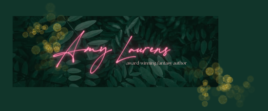Or order from your favourite store in ebook or in print (including hardcover)
Introduction
Even before I was an English teacher and a writer, I was fascinated by the idea of truth in mythology, or truth in fairy tales. The ideas that there was some quintessential element of myths, legends and fairy tales that was real, that was actual, captivated me, and I spent long hours in the fairy tale section of my university library, pouring over books for no particular end.
I rather thought that if I were to do an Honours year, I’d like it to be on that topic… But I could never really coalesce in my head what a thesis on that might look like, and so I gave the idea away—forever, I’d thought, but fate had other plans.
It was Maggie Stiefvater and Krista Ball that brought the idea back to the forefront of my mind years later; Krista because, as a writing buddy, she persuaded me to pursue publication of my non-fiction in the first place, and Ms Stiefvater because she wrote online about the story behind her Wolves Of Mercy Falls series: she too was enchanted about the idea of the truth-in-the-myth, only she was after the symbolic truth, what these creatures meant, what they were used as a stand-in for. That, to her, was the fundamental point of such creatures in fiction—and I realised that if I was going to do anything particularly interesting with mythological creatures (to me; I’m not making any particular judgement about what does or does not interest other people), I too wanted to understand their symbolism, their historical meaning, so that I could grapple with what that might mean in a contemporary setting.
What would the contemporary equivalent be of an attempt to rationalise nature? Or death? Or the ocean? What would that look like?
In order to find out the answers, I had to begin at the beginning, and figure it out: what did these mythological creatures mean?
And so, dear reader, you have this book: an exploration of the symbolic meaning throughout history of seven mythological or paranormal creatures, chosen partly for their enduring popularity and partly for the degree to which I thought I might find something interesting in the research. Sometimes I was very fortunate, and those two categories overlapped.
I hope that within these pages, you too can find something that causes you to look anew at creatures you thought you knew, to understand them in a different light, sometimes more flattering, sometimes quite damning—but either way, most definitely more complex.
There’s no denying that simplicity carries its own sense of satisfaction… But complexity is rich, and delicious, and food to grow on.
Enjoy, dear reader—and I do hope you grow.
Amy Laurens, March 2022
Table Of Contents
- Introduction
- Vampires: Blood, Seduction and Social Acceptance
- Werewolves: Liminality, Power and Transformation
- Mermaids: Desire, Longing And Death
- Fairies: Malevolence, Beneficence and Nature
- Unicorns: Strength, Freedom and Awe
- Dragons: World Origins, Morality And Knowledge
- Goblins: Greed, Anti-Semitism And Neurodivergence
- Conclusion
- References
